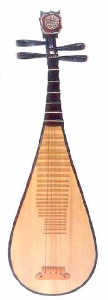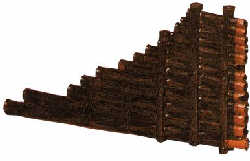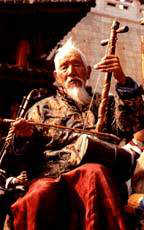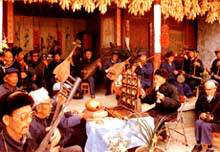 Qiuci music
Qiuci music
 |
|
Pipa |
 |
|
Paixiao |
In AD384, Lu Guang, a pre-Qin general, stormed the Qiuci State and confiscated numerous books on dances and valuable treasures. Later on, Qiuci music became popular in China.
In the Sui (581-618) and Tang (618-907) dynasties, Qiuci music was played among the common people, as well as in the courts. Their musical instruments (lutes, thepipaandpaixiaopipes) and notation were being adopted. Today, the city is still influential in the arts and culture of the Xinjiang Uygur Autonomous Region and its surrounding areas.
 Naxi ancient music
Naxi ancient music
 The Naxi people
The Naxi people are fond of song and dance. Featuring flutes, reed pipes and wind and stringed instruments, Naxi ancient music is a kind of classical music that combines sacred tunes from Taoist and Confucian ceremonies with literary lyrics and poetry.
are fond of song and dance. Featuring flutes, reed pipes and wind and stringed instruments, Naxi ancient music is a kind of classical music that combines sacred tunes from Taoist and Confucian ceremonies with literary lyrics and poetry.
Naxi ancient music, which is popular in the Lijiang area of Southeast China's Yunnan Province, is believed to have its roots in Xi'an ancient music. It can be performed in two ways - sitting or walking. Seated performances are a kind of chamber music that involve more than 20 musical instruments, including wind instruments, such as thedi zi,sheng(a kind of reed pipe wind instrument),guan zi, and percussion instruments, such as the zuo gu ("sitting drum"), war drum, du gu ("single drum"), big and small cymbals, big gongs, a slit drum, etc.
Today, Naxi ancient music is reputed as the "living fossil of music".